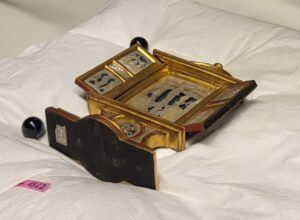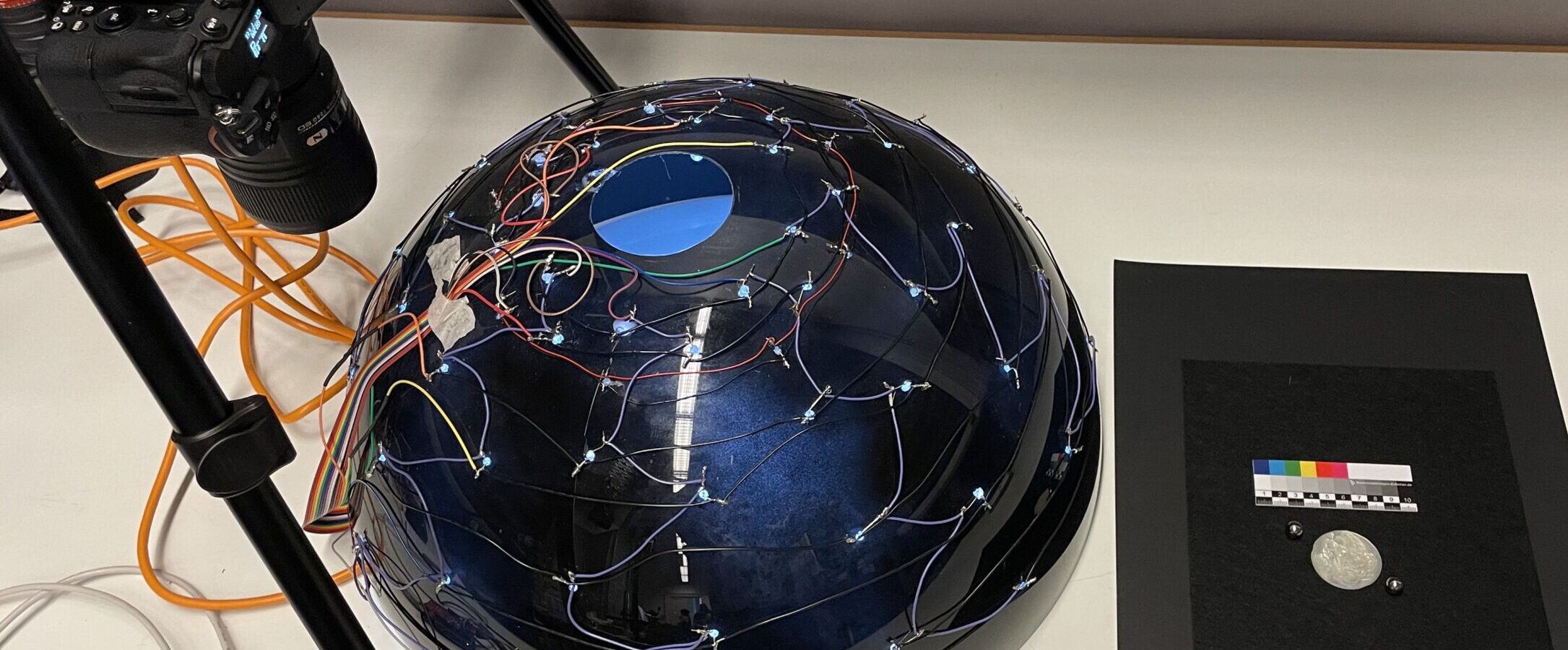Projects
Shimmering Faith: Relightable Imaging of Mother-of-Pearl Microcarvings
Shimmering Faith investigates how Reflectance Transformation Imaging (RTI) can be used to study and communicate the distinctive visual and material properties of mother-of-pearl microcarvings and inlays from the late-medieval and early-modern period. These small-scale artworks—delicate, reflective, and often translucent—were designed to capture and transform light. Their radiance was not merely decorative but integral to their significance and function, whose devotional objects evoke the presence of divine illumination.

A 15th-century triptych from the Bode-Museum prepared for RTI imaging.
Traditional imaging techniques struggle to represent this interplay of light and material. Photographs flatten the lustrous surface; 3D scans cannot reproduce its shifting glow. RTI offers a powerful alternative, allowing the digital relighting of an object’s surface so that its visual character can be experienced dynamically. Through this technique, Shimmering Faith further explores how light-dependent materials can be rendered visible, interpretable, and accessible in digital form.
By integrating technical experimentation with art-historical inquiry, the project seeks to understand how digital imaging can reanimate the sensory and devotional dimensions of historical objects—revealing how craftsmanship, material, and light together shaped the viewer’s experience of faith.
Research Focus
- Material Study: Examining the optical behavior and devotional symbolism of mother-of-pearl in late-medieval microcarvings and early-modern inlays and sculptural works.
- Imaging Innovation: Developing RTI workflows adapted for lustrous, reflective, and translucent materials.
- Interpretive Practice: Considering how interactive imaging reshapes curatorial, scholarly, and public engagement with light-dependent objects.
- Accessibility: Promoting open, reproducible imaging methods suitable for heritage institutions of varying capacities.
Case Studies
Pilot imaging campaigns at the Rijksmuseum Catharijneconvent (Utrecht) and the Bode-Museum Skulpturensammlung und Museum für Byzantinische Kunst (Berlin) have provided the project’s foundation. These studies explore how RTI can capture the interplay of texture, translucency, and light in late-medieval and early-modern nacre objects: revealing both technical mastery and theological meaning embedded in luminous surfaces.
See for example this interactive RTI model of a 15th-century micro-carving from the Bode-Museum Berlin.
Research Team
Sjors Nab —Digital-Technical Art Historian and Medievalist, Utrecht University ArtLab affiliated researcher.
Alicja Wieteska — Art Historian of Medieval Sculpture.
Izzy Stone — Art Historian of the Early Modern period, PhD-fellow at The Open University (London).
Affiliated with the Utrecht University ArtLab, Shimmering Faith brings together expertise in art history, heritage imaging, and digital methodology. The project aims to develop more responsive, light-aware approaches to cultural heritage documentation—bridging material study, technology, and devotional experience.
Contact
Questions, suggestions or inquiries can be direct to Sjors Nab (s.h.nab@uu.nl). The project’s scope is still open and willing to collaborate with more heritage institutions.

